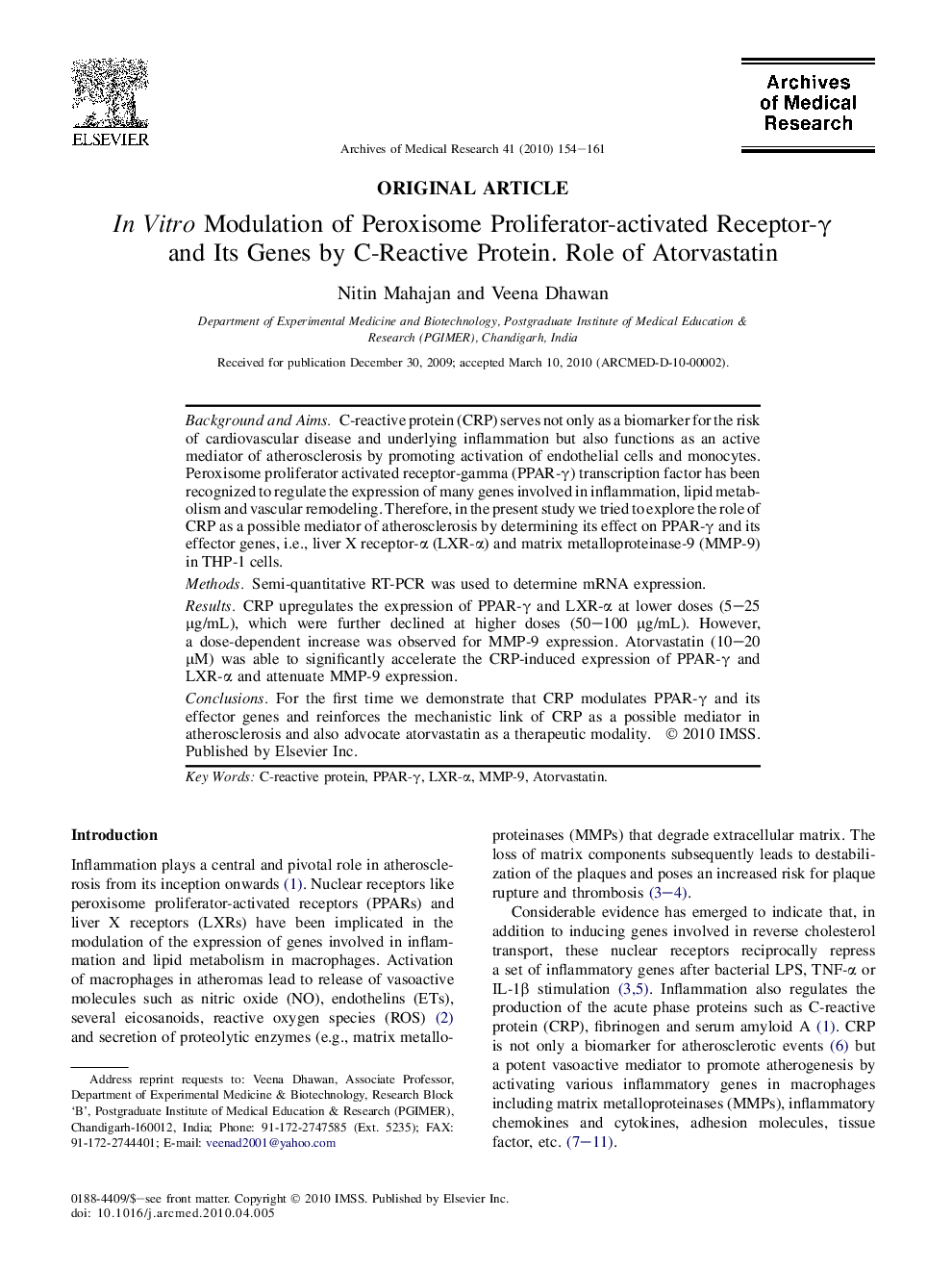| Article ID | Journal | Published Year | Pages | File Type |
|---|---|---|---|---|
| 3447240 | Archives of Medical Research | 2010 | 8 Pages |
Background and AimsC-reactive protein (CRP) serves not only as a biomarker for the risk of cardiovascular disease and underlying inflammation but also functions as an active mediator of atherosclerosis by promoting activation of endothelial cells and monocytes. Peroxisome proliferator activated receptor-gamma (PPAR-γ) transcription factor has been recognized to regulate the expression of many genes involved in inflammation, lipid metabolism and vascular remodeling. Therefore, in the present study we tried to explore the role of CRP as a possible mediator of atherosclerosis by determining its effect on PPAR-γ and its effector genes, i.e., liver X receptor-α (LXR-α) and matrix metalloproteinase-9 (MMP-9) in THP-1 cells.MethodsSemi-quantitative RT-PCR was used to determine mRNA expression.ResultsCRP upregulates the expression of PPAR-γ and LXR-α at lower doses (5–25 μg/mL), which were further declined at higher doses (50–100 μg/mL). However, a dose-dependent increase was observed for MMP-9 expression. Atorvastatin (10–20 μM) was able to significantly accelerate the CRP-induced expression of PPAR-γ and LXR-α and attenuate MMP-9 expression.ConclusionsFor the first time we demonstrate that CRP modulates PPAR-γ and its effector genes and reinforces the mechanistic link of CRP as a possible mediator in atherosclerosis and also advocate atorvastatin as a therapeutic modality.
